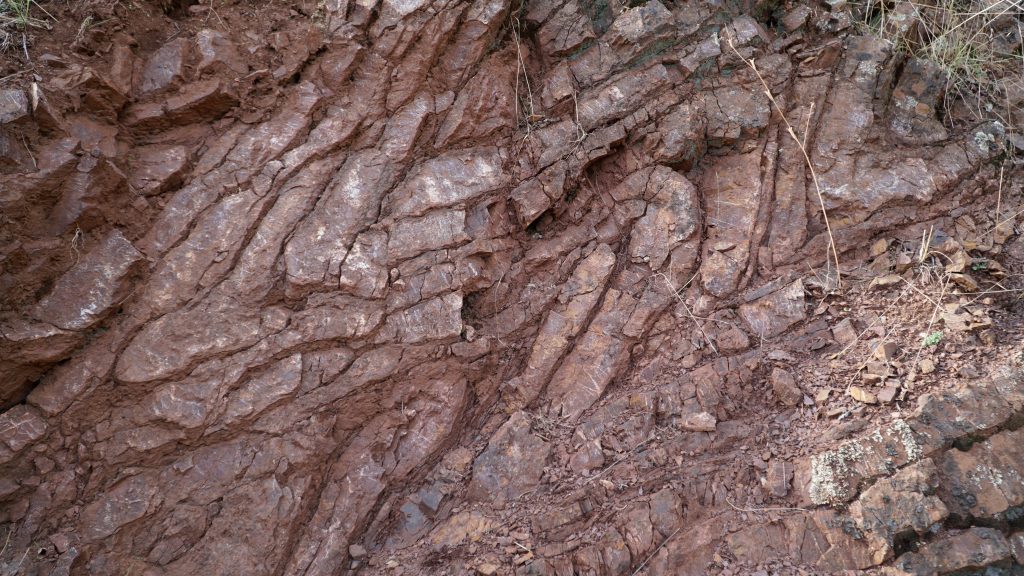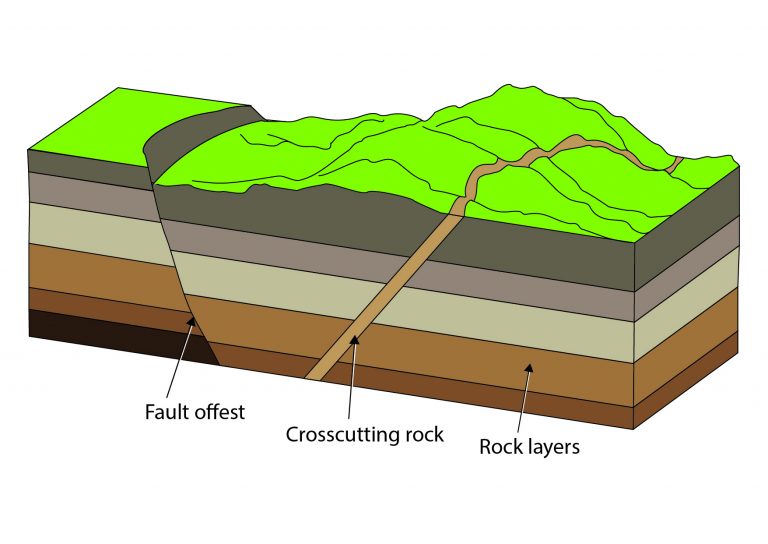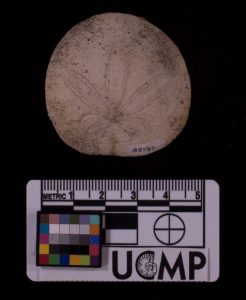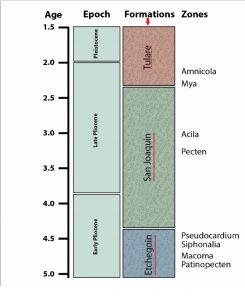Bending of a layer of rock, usually through tectonic forces

by ldwhite3
Bending of a layer of rock, usually through tectonic forces

by eclites
Fuel made from the organic remains of ancient organisms. Fossil fuels include peat and coal, which are made primarily from compressed plants that accumulate in swampy environments, and oil and natural gas, which are made primarily from ocean plankton that accumulate in sediment at the bottom of the ocean.
by eclites
A fracture in the Earth’s crust in which the rock on one side of the fracture moves measurably in relation to the rock on the other side.

by ldwhite3
Fossils (fauna and flora) change upward, succeed each other vertically in layered sedimentary rocks (strata) as organisms evolve through time.
by eclites
Preserved evidence of ancient life, including preserved skeletal or tissue material, molds or casts, and traces of behavior, such as fossilized footprints and burrows. Fossilization may alter biological material in a variety of ways, including permineralization, replacement, and compression.
Remains are often classified as fossils when they are older than 10,000 years, the traditional start of the Holocene (Recent) epoch. However, this date is only a practical guideline – scientists studying successions of plant or animal remains would not recognize any sudden change in the material at 10,000 years, and would typically refer to all material buried in sediments as fossil material.
The word fossil is derived from the Latin word fossilis, meaning “dug up.”

by eclites
A mappable unit of rock in a geographic area.
